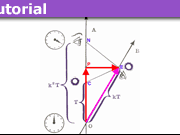What is relativistic mass and why it is not used much?
It happens that the term relativistic mass is used, in particular in the introductory text on special relativity. It should be noted that whether or not to use relativistic mass to a large extent is a matter of convention, convenience, and semantics as long as it is used properly and does not have any impact on the predictions of special relativity. This FAQ is intended to clarify the concept and explain why it has essentially fallen out of fashion in the scientific community.
Table of Contents
The concept of relativistic mass
In special relativity, the expressions for the total energy and momentum of an object can be written as
$$E = m_0 \gamma c^2, \quad \vec p = m_0\gamma \vec v,$$
where ##\gamma = \frac{1}{\sqrt{1-v^2/c^2}}## and ##m_0## is the invariant mass (or rest mass) of the object. If we introduce the relativistic mass
$$m = m_0\gamma$$
these expressions turn into
$$E = mc^2, \quad \vec p = m\vec v,$$
which many find more familiar since the first is an iconic relation in special relativity and the latter coincides with the classical expression for momentum.
Shortcomings of relativistic mass
In classical mechanics, there are two different concepts of mass, gravitational mass, which determines the force on an object due to gravity (##\vec F = m\vec g##), and inertial mass, which determines the resistance to the acceleration of an object (##\vec a = \vec F/m##). Since special relativity cannot include Newtonian gravity, the concept of gravitational mass is moot. In addition, the resistance to acceleration depends on both the velocity of the object as well as the direction of the force and so relativistic mass cannot, in general, correspond to a generalization of either. In the rest frame of an object, we regain the relation between force and acceleration of classical mechanics, but this is well described by the invariant mass and there is no need to introduce relativistic mass for this purpose.
A common misconception that can be attributed to the concept of relativistic mass is that an object changes its internal structure by gaining mass when it travels at relativistic speeds. The object’s internal structure is independent of its velocity and it will always appear to be the same in its rest frame. The source of this confusion is that relativistic mass depends on the frame in which the object is observed and the concept of mass is typically regarded as a property of an object. See also our FAQ on the mass-energy equivalence.
Because of the above, relativistic mass is generally not used in scientific communication as quoting it would also require quoting the velocity of the object. Furthermore, as evidenced by ##E = mc^2##, the relativistic mass is simply proportional (and thus equivalent) to the total energy of an object, which is a concept far less liable to misunderstandings as energy is frame dependent also in classical mechanics.
How kinematics are treated in special relativity
Instead of introducing the relativistic mass of an object, we simply consider the invariant mass ##m_0## to be the mass of an object. The total energy and momentum of an object is given by
$$E^2 = m_0^2 c^4 + p^2 c^2, \quad \vec p = m_0 \gamma \vec v.$$
The relativistic relation between the force acting on an object and its acceleration is given by
$$\vec F = \frac{d\vec p}{dt} = m_0 \frac{d(\gamma\vec v)}{dt},$$
which is equivalent to the definition in classical mechanics for small velocities. If the force is collinear with the velocity, this can be written as
$$F = m_0\gamma^3 a.$$
Note here that we would not recover ##F = ma## if we introduced relativistic mass. As ##\gamma \to \infty## when ##v \to c##, the faster an object is traveling, the more force is needed to accelerate it. This, or equivalently the fact that the total energy goes to infinity as ##v\to c##, is the more appropriate argument for why massive objects cannot be accelerated to the speed of light.
Professor in theoretical astroparticle physics. He did his thesis on phenomenological neutrino physics and is currently also working with different aspects of dark matter as well as physics beyond the Standard Model. Author of “Mathematical Methods for Physics and Engineering” (see Insight “The Birth of a Textbook”). A member at Physics Forums since 2014.








The physicists should not have used the word relativistic mass but relativistic velocity that is spatial components of now called four-velocity.
Not mass but velocity they should have attribute relativistic results.
For constant m.Yes, this is part of what I intended by "in the appropriate limit", but I certainly could have been explicit.
Extrapolations beyond the limits of experimental observations are not reliableI am not talking about extrapolation.
That's just another formalism to describe the same physics.Sure, but it is also a formalism which clearly preserves all of the expected relationships. That doesn't make it right or wrong, but it does contradict your arguments in post 27.
At least not a scalar. Of course there is an M(v) with F=M·a, but it is almost ever different from relativistic mass.
Wouldn't it be a good idea to clear this misconception from the beginning? The sentence "[…] inertial mass, which determines the resistance to acceleration of an object (##vec a = vec F/m##)" reather sounds like a confirmation.Can you demonstrate these very strange claims for the most simple relativistic force, i.e., the electromagnetic force on a classical charged particle in an external electromagnetic field (neglecting radiation reaction forces of course)? I doubt it very much.
The four-dimensionally covariant EoM is much simpler than such confusing constructs anyway. I simply reads
$$m frac{mathrm{d}^2 x^{mu}}{mathrm{d} tau^2}=frac{q}{c} F^{mu nu} frac{mathrm{d} x_{nu}}{mathrm{d} tau},$$
where ##tau## is the proper tine of the particle.
Link to the Insights article appears to be broken (wasn't working yesterday, either).
In the classical domain f=ma is experimentally validated.For constant m.
So any theory which would generalize classical mechanics must reduce to f=ma in the appropriate limit.For constant m. Extrapolations beyond the limits of experimental observations are not reliable. Therefore you must ot expect that the relation will hold in such cases.
We therefore have a very strong expectation that we will see something like it in relativity, with some suitable modifications for the generalization.For constant m. There are conditions, where this is the case (e.g. during uniform circular motion or in good approximation for non-relativistic velocities) and in these cases F=m·a still remains vaid. But significantant changes of m are outside the experimental validated range of validity of F=m·a. Therefore it is no surprise that the relation doesn't hold in these cases.
with some suitable modifications for the generalization.There are no modifications required except for the transformation. You just need to replace Galilean transformation by Lorentz transformation and than derive the resulting equations for force, kinetic energy etc.
Here the most appropriate generalization is the use of four vectorsThat's just another formalism to describe the same physics.
On the other hand, that definition means that force isn't necessarily invariant under a Galilean boost (because of the frame-dependent ##dot{m} vec v## term), and the "proper force" concept becomes useful (by which I mean the force as measured in the forcee's instantaneous rest frame, always equal to ##m vec a##). An argument that this opens up a can of worms and should be avoided can be found here.I might also argue that the authors of the linked article "stack the deck" against ##dot{vec p}## on page 2, where they introduce the following "apparent paradox":
If we consider the simple case of a variable mass, and we write Newton's second law as:
##vec F = m dfrac{mathrm{d} vec v}{mathrm{d}t} + vec v dfrac{mathrm{d}m}{mathrm{d}t} qquad qquad (2)##
we can easily see that it violates the relativity principle under Galilean transformations. When ##vec F## is zero, in particular, Equation (2) implies that the particle will remain at rest in a system where it is originally at rest, but it will be accelerated by the "force" ##-vec v , mathrm{d}m / mathrm{d}t## in a system where the particle moves with velocity ##vec v##!
To solve this apparent paradox …Of course, if you've defined force as ##dot{vec p}##, then you've accepted that it isn't a Galilean invariant, and you know perfectly well that ##vec F## cannot equal zero if the mass varies while the (non-zero) velocity doesn't. Seems to me that there's no "apparent paradox" here, unless you allow the ##m vec a## definition to sneak in.
Note, my point had nothing to do with the definition of force. I was discussing the notion of inertia, which was conceptually resistance to force via F=mA. It is irrelevant whether this is a derived relation or a definition.
As far as I can tell, it's only a matter of convention whether we define force as ##dot{vec p}## or ##m vec a## in Newtonian mechanics. The only difference is what symbols and terminology we use in a variable-mass situation. Given that ##vec f equiv dot{vec p}## becomes necessary in special relativity, it is perhaps unfortunate that the ##m vec a## definition is generally preferred in "university physics" courses—but I imagine it's easier to teach.
Another argument in favor of ##vec f equiv dot{vec p}## in Newtonian physics is aesthetic: isn't it nice to have a specific word and symbol for the time-derivative of momentum, a conserved vector of central importance?
On the other hand, that definition means that force isn't necessarily invariant under a Galilean boost (because of the frame-dependent ##dot{m} vec v## term), and the "proper force" concept becomes useful (by which I mean the force as measured in the forcee's instantaneous rest frame, always equal to ##m vec a##). An argument that this opens up a can of worms and should be avoided can be found here.